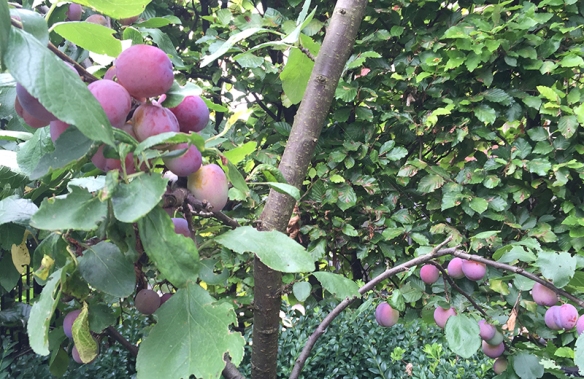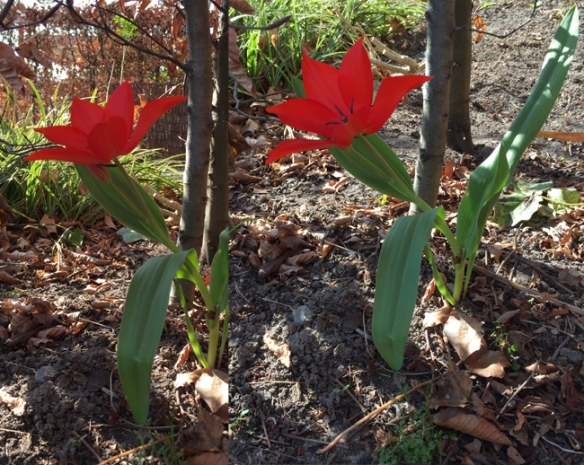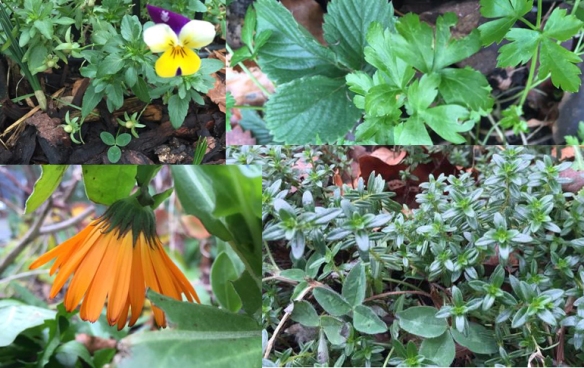So I got this allotment. The permaculture way I suppose would be to haul in a ton of material and cover the soil completely with layer upon layer to suppress weeds until they die through a lack of sunlight.
Without that amount of composting material, however, I soon found all kinds of stuff emerging from the soil.
Something old, something new – seeds and plants
One thing I’m really happy about is my herbs. And a couple of plants I didn’t plan for. My predecessor on this allotment let everything go to seed and afterward everything on site was dug into the soil. So I got some free onions which I transplanted for their second year in the soil. And quite a few coriander plants spread all over the site.
Then there are a couple of plants (yes, weeds) I don’t mind – if there are a few of them. However a few isn’t what I got. Every bit of root of the stinging nettles on the site sprouted. So far I think I’ve pulled up 4 bucketloads of stinging nettles and grasses…hang on… 5… but it’s down from a bucket a day a bucket per week. Just about. And that’s just stinging nettles and grasses.
And then there’s a plant I once looked up and it appears to be called Lady’s thumb, of which the leaves are apparently edible. Unfortunately I was raised knowing a limited number of vegetables which were readily available at the supermarket and not too much hassle to prepare for dinner (that’s my guess). So trying out new stuff is something I’m very cautious about and there’s veggies in the shops I haven’t even got round to tasting, let alone stuff that grows spontaneously all over the place. Since this Lady’s thumb isn’t my biggest worry, I leave the plants to dry on top of the soil. Horsetail doesn’t seem to be on the list of edibles… more’s the pity.
I did get some plants to grow – finally! I’ve got chamomile, thyme, dill growing happily underneath a couple of young apple trees. And seleriac. I grew a couple of lychee plants from their – well – beanlike seeds. Two of them have survived the transplant into the allotment so far.
And I’ve got leek flowers to look forward to, from leftover leek stems I planted last year. I had hoped to add a picture here, but I’m still waiting for them to flower. Which is why I’ve added a couple of photos of my (mainly) tulips under the hedge – I dug some more into the spaces underneath the hedge this year, which turned out great since the new tulips produced their blooms around the time the ‘veteran’ tulips had gone over. The anemone was a nice surprise.
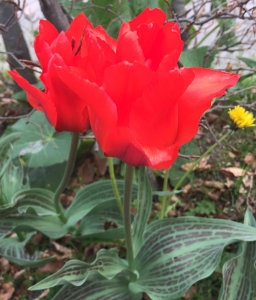

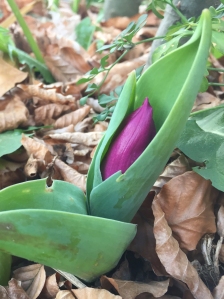
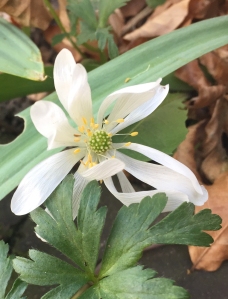
Respect for weeds… oh yes indeed
All things considered, I greatly respect weeds for their resilience and speed of growth the moment any rain falls. It would be easier to like them if their numbers were fewer though… after I planted a few young plants and watered them daily for a week because we had virtually no rainfall, guess what I got? In less than half a square metre there were dozens, no, well over a hundred little weed seedlings popping up. In just that small patch. And I’m not even sure these are edible.
Apart from that, it’s strawberry season over here! And I got a couple of wonderfully sweet raspberries too, from a bush that delivers fruit from june (to my surprise) well into november. I wonder if there are several raspberry shrubs hiding in the same patch?
Plants are amazing.


